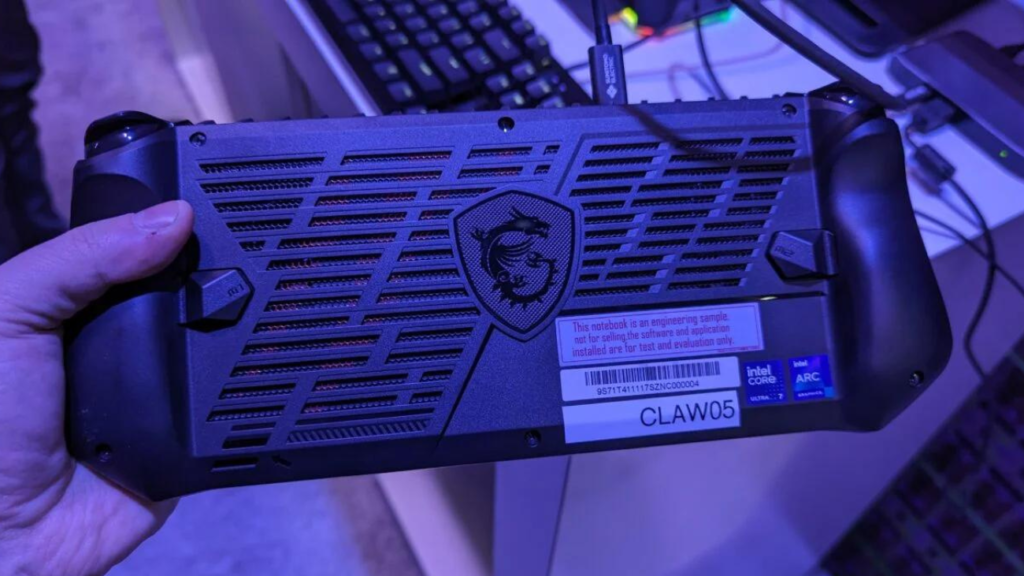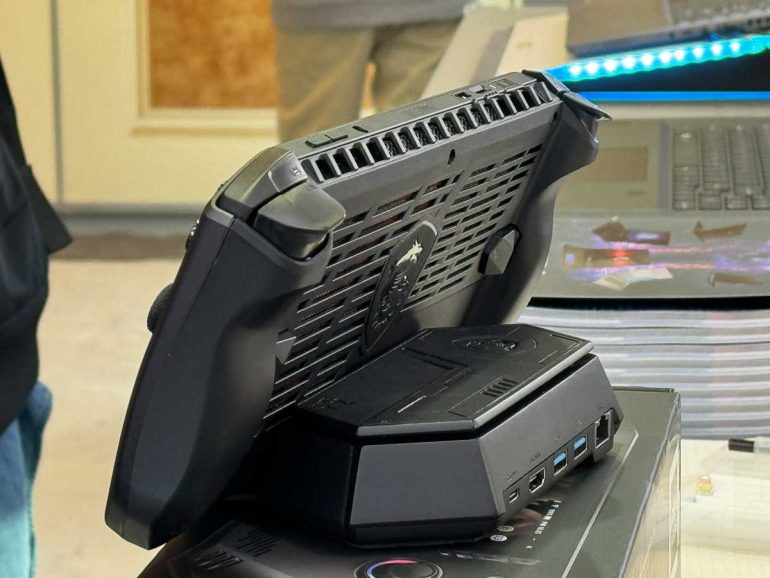
The MSI Claw: the Steam Deck rival powered by Intel
How would the Asus ROG Ally differ if it had bigger grips, an unproven chip, and more battery life?
MSI has recently introduced the Claw, a portable gaming PC designed for Windows gaming enthusiasts. Priced at $699, it aims to compete with devices like the Asus ROG Ally and Lenovo Legion Go. What sets the Claw apart is its Intel Core Ultra processor, which MSI asserts outperforms AMD counterparts in both performance and battery life. This handheld gaming device is positioned to give gamers a compelling alternative with its powerful Intel engine.
Having experienced the MSI Claw hands-on at CES 2024, it’s currently challenging to provide a definitive verdict on its performance and battery life, as these aspects are still in the developmental stage. The devices showcased at CES are engineering samples, and their final optimization is expected before the planned launch in the first half of 2024.
On the positive side, if you appreciate the Asus ROG Ally and desire a device that offers enhanced comfort and extended battery life, MSI might have a solution for you. The Claw distinguishes itself with larger and more comfortable grips compared to Asus, avoiding the excessive bulkiness and hand-straining edges found in the Lenovo Legion Go. The design of the Claw appears to draw inspiration directly from the ROG Ally, featuring a similar shape, port placement (including an SD card reader adjacent to a vent), nearly identical button arrangement, and comparable screen bezels surrounding a 7-inch 120Hz 1080p IPS screen. MSI seems to aim to refine and improve upon the familiar features that users appreciate in the ROG Ally.
The user interface of the MSI Claw seems to share similarities with its predecessors and could benefit from certain user-friendly enhancements that were eventually introduced to the Ally after some time. Notably, the Claw offers features like the ability to map an Xbox button and an anti-dead zone to address joystick oversensitivity in certain games, providing a more customizable and responsive gaming experience.





An important highlight is the inclusion of a substantial 53Wh battery, surpassing the ROG Ally’s 40Wh pack and aligning with the battery capacity of devices like the Lenovo Legion Go and the Steam Deck OLED. Additionally, the Claw boasts Hall effect joysticks, a feature also found in the Legion Go, contributing to precise and responsive control during gameplay. These battery and joystick features enhance the overall appeal of the MSI Claw, promising extended gaming sessions with improved control responsiveness.
Also read | Virtual Reality Casinos – New Era of Gaming World
According to MSI, the Claw will feature a standout capability inherited from the Ally, surpassing the Deck and Legion Go: variable refresh rate, enhancing the overall smoothness of the Asus gaming experience.
However, the initial impressions of the Intel Core Ultra chip, as observed in the engineering samples showcased at CES, suggest some performance challenges. The gameplay on the Intel Core Ultra-powered devices exhibited some stuttering and frequent frame spikes. Notably, the chip defaults to a 24W-27W TDP, a bit higher than anticipated for a supposedly more efficient chip compared to AMD’s. It’s important to emphasize that these are engineering samples, and there’s likely room for optimization in the months leading up to the launch.
While the fans on the Claw appear relatively quiet under load, it’s challenging to make a conclusive judgment in a crowded room. Currently, the Intel Core Ultra chip doesn’t seem to match up competitively with the Steam Deck at lower wattage. Testing it in the “Super Battery Saver” 15W mode, similar to the Deck, the Claw struggled in an Assassin’s Creed Mirage benchmark, even at 720p and the lowest settings, yielding an average of just 24fps with significant frame drops. It’s clear that there’s room for improvement in optimizing the chip’s performance, and future updates may address these concerns before the official launch.
The MSI Claw offers various turbo modes, allowing for increased performance: up to 35W on battery power or 40W when plugged into the wall. Even in the 27W performance mode, it demonstrated decent performance, achieving an average of 40fps at 720p and just over 30fps at 1080p in the Assassin’s Creed Mirage benchmark. Users can customize their experience further by setting fan curves, mapping keys, and programming up to 12-key macros with per-key delays.
Also read | In 2024, here are 5 tech trends to watch
Notably, the Claw comes equipped with Wi-Fi 7, offering potential speed advantages, although official Windows 11 support for Wi-Fi 7 may come later in the year. MSI claims to have observed four times the speeds in lab testing with Wi-Fi 7.
The device also incorporates artificial intelligence features, including AI noise canceling and an allegedly AI-powered performance mode. The latter leverages the Intel chip’s NPU to dynamically adjust the screen backlight and chip power. During testing, the chip’s wattage ranged between 24W and 27W, indicating active adjustments.
Despite the power consumption, MSI asserts that demanding games should yield around two hours of battery life on a single charge, with lighter games providing four hours and video playback extending to five hours or more. While this may not surpass the Deck OLED’s expected performance, it’s a notable improvement for Windows handhelds. MSI representatives mention achieving two hours of Forza 5 gameplay, a significant leap from the one hour observed on the Asus ROG Ally. Although these claims require further verification, a 25 percent battery dip over 30 minutes of testing suggests a trajectory toward meeting the two-hour mark for demanding games.
Also read | Meta reduces headset and accessory prices for Quest 2














Thank you for the good writeup It in fact was a amusement account it Look advanced to far added agreeable from you However how could we communicate